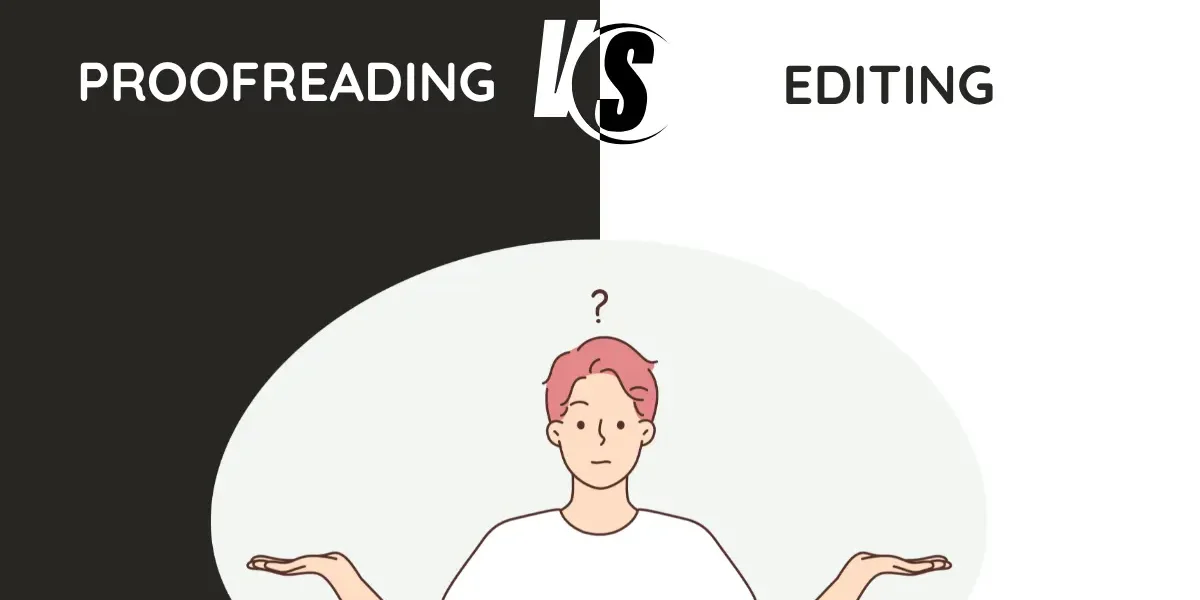Editing is always first in line. You will work on significant changes in the content, structure, and language. The authors often do the first stage of editing, while the professional editors step in to make the final improvements in grammar and style. On the other side, proofreading is the final stage of checking the text before it is published or turned in. Your focus is on correcting mirror errors and inconsistencies.
So, let’s dive in and find out the difference between editing and proofreading by considering all the factors.
The Silent Hero behind Your Flawless Writing
Before we get to the main context, we must understand the placement of both steps. Editing will breathe life into your ideas, improving flow, clarity, and coherence. While proofreading ensures that your text is spotless and free from all mechanical errors, it is essential to review it thoroughly. There are different proofreading services in Canada that help their clients nail the process. When combined, both give a final polished piece that is ready for the world to see.
Editing: A Step to Reshape Your Ideas
This is the step where your writing gets a structural and stylistic makeover. It focuses on improving sentences, flow, tone, and meaning. Editors look beyond grammar; they enhance logic, rhythm, and engagement, ensuring your content communicates clearly and effectively. Some of the key aspects focused on in the editing process include:
- The editor will rewrite your sentence to remove ambiguity and make the delivered message clear.
- They will work on rearranging the paragraphs and the sections for a smooth transition and logical flow.
- Most of the services ensure that the tone matches the target audience.
- Word choice is important. All the dull or repetitive words will be replaced with stronger and more vivid alternatives.
- Editors maintain the consistent spelling, formatting, and language style throughout the piece.
Proofreading: The Final Line of Defense
Now, let’s find out proofreading meaning? It is the last and most meticulous step before you publish your work. It is never about rewriting the content again, but you need to look for small mistakes that might slip out during the editing process. A proofreader’s job is to produce a perfect piece at the surface level and ensure its grammar sounds perfect and is visually flawless.
- You will fix grammar and punctuation, fixing misplaced commas, missing periods, and incorrect verb tenses.
- Check for the spellings that include names and technical terms.
- Scan for the font style, margin, numbering, and alignment.
- Detect stray letters, double spaces, and incorrect capitalization.
- Improve inconsistencies in abbreviations, dates, and references.
Editing Vs. Proofreading: The Core Differences
| Aspect | Editing | Proofreading |
| Purpose | To refine the content’s structure, flow, and clarity | To fix spelling, grammar, and punctuation errors |
| Depth | Involves rewording and restructuring | Involves surface-level corrections only |
| Timing | Performed in the early to mid-stage of writing | Done at the very end before publishing |
| Focus | Content quality, tone, coherence | Accuracy, formatting, and presentation |
| Outcome | Improves readability and engagement | Ensures correctness and polish |
When to Edit and Proofread: The Right Time

An understanding of when to edit and proofread saves both your time and energy. Each step requires a different mindset and level of detail. Editing Services are ready to serve their clients with the best.
- Once you have completed your writing and taken a short break to refresh your mind, you will begin with editing to refine ideas, fix weak arguments, and strengthen clarity.
- After your content is approved by the professional, you will move towards proofreading it and catch small mistakes to finalize the piece.
- Before getting the file printed or publishing it, you will always conduct proofreading, even if you have already edited.
The best approach is to hire two separate individuals for editing and proofreading. In the same way, if you have edited your work, ask your friend or peer to proofread it. Skipping any of these steps will lead to embarrassment.
The Importance of Both in Quality Writing
Excellent writing is not magic; you need to build it by refining your content. Editing and proofreading, when complemented with each other and targeting different layers of quality, will produce quality work. One will enhance the clarity, while the other guarantees precision.
- An error-free and well-structured writing creates a strong impression.
- Polished writing will flow smoothly and keep its readers hooked from the first line to the finish.
- Businesses and professionals can gain authority through clean and well-edited communication.
- Reduces the risk of costly reprints or reputation damage.
Ensure that you edit, or else your content will look disorganized. In the same way, without proofreading, the content seems careless. The two of them create the file that forms the perfect equation for excellence. If you think that you need someone to help you with this, then look for editing and proofreading services.
Common Misconceptions about Editing and Proofreading
A common misconception among most writers is that editing and proofreading can be done simultaneously. Remember, each of them requires a unique focus, skill set, and English language techniques.
Editing and proofreading services can help you fix the content. You need to get in touch with an authentic and reliable one, and then you can get your content polished.
- Editing does not fix typos. It is used to enhance the meaning and not to correct surface mistakes.
- Proofreading will not change sentences but ensures technical correctness.
- AI tools can never replace human editors as they help identify errors. Instead, these tools miss nuance, flow, and emotional tone.
- A well-edited but unproofread text still will appear unprofessional.
You need to understand this difference to avoid delivering work that feels almost completed. Instead, you submit a truly polished work.
FAQs
What is the difference between proofreading and editing?
In editing, you will focus on improving the structure, flow, and clarity of the writing. On the other hand, during proofreading, you will check for grammar, spelling, and punctuation mistakes.
After completing the context, which is the first step?
Editing will come first. Proofreading is the final step after editing, just before publishing or submission.
Can a single person do both the editing and proofreading?
It is best that you hire editing and proofreading services or two different people for editing and proofreading. Fresh eyes will always catch more errors.
What is the importance of proofreading?
Proofreading ensures that your writing is free from all typos, grammar errors, and formatting issues. This will give it a polished and professional look.
Polish Your Words Until They Are Perfect
Editing and proofreading may seem like minor steps, but they define the difference between average writing and exceptional communication. Editing breathes life into ideas, shaping them into coherent, engaging narratives. Proofreading then ensures that no technical flaw distracts from your message. Together, they form a seamless process that transforms rough drafts into polished brilliance. Whether you are a student, author, or business professional, mastering both is your ticket to producing writing that not only reads well but feels complete, because perfection lives in the details.
